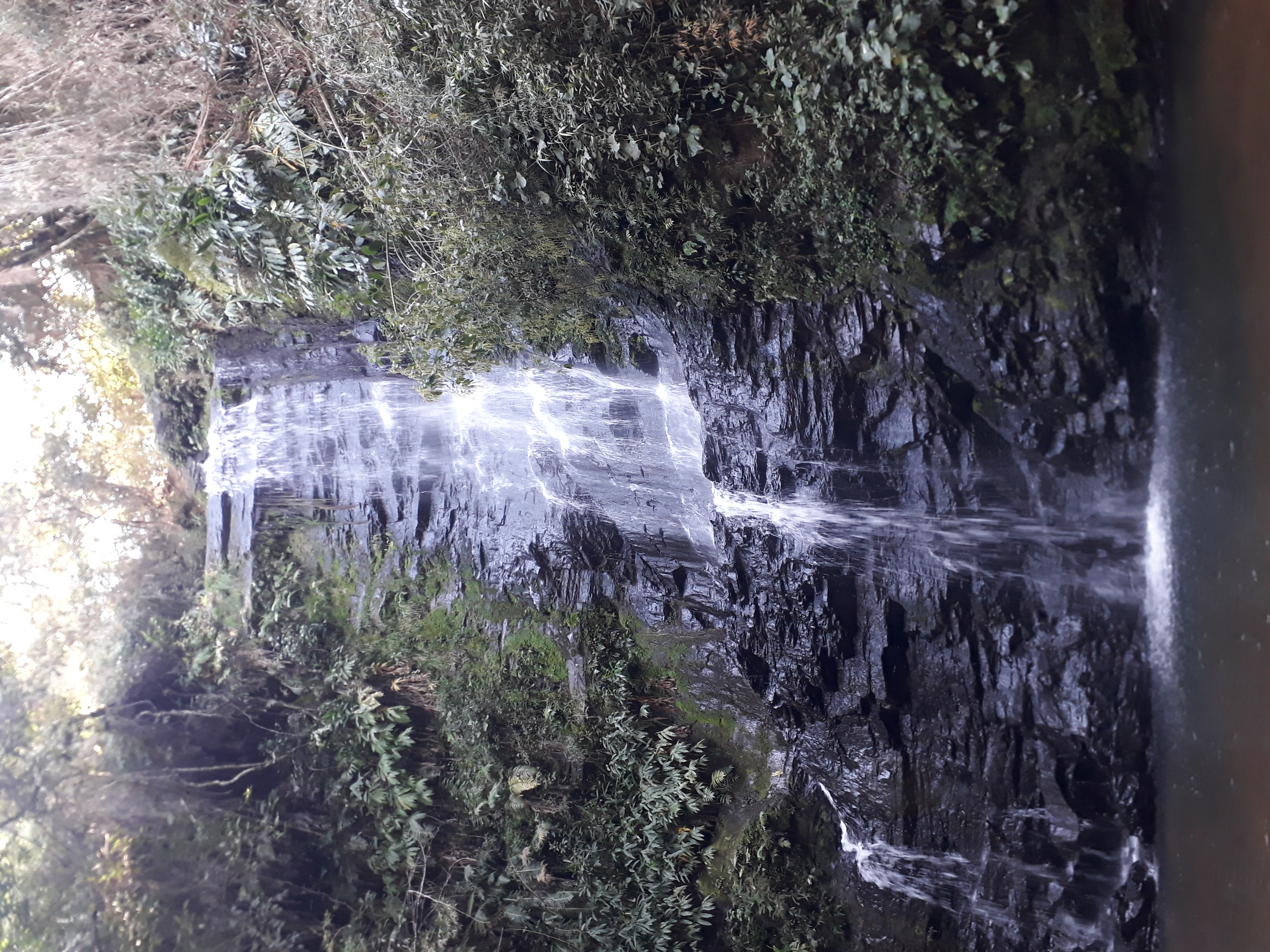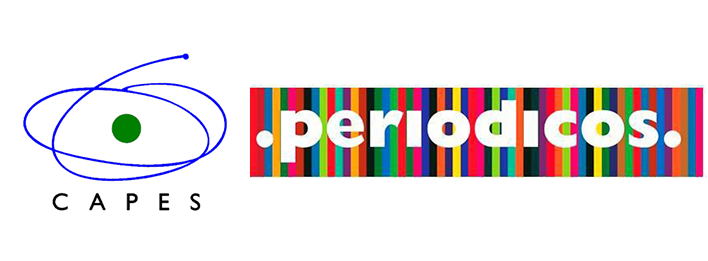A psychographic segmentation of inbound tourists to South Africa based on country image, the place brand and travel motives
Psychographic segmentation
DOI:
https://doi.org/10.29149/mtr.v6i2.6746Palavras-chave:
Country image, place brand, psychographic segmentation, pull travel motives, South African tourismResumo
As tourist behaviour evolves due to the effects of globalisation, consumerism and contemporary events, tourism practitioners as specialised place managers need to innovate and adapt to market shifts consistently. The paper explores the utility of country image and place brands in conjunction with travel motives as segmentation bases for inbound tourists. A quantitative-deductive study was conducted. Data was generated from a sample of 206 inbound tourists to South Africa by way of a self-administered questionnaire and was analysed via exploratory factor, hierarchical cluster, analysis of variance, cross-tabulations and chi-square analyses, respectively. The hierarchical cluster analysis identifies four psychographic segments based on tourists' susceptibility to the influence of country image(s), place brand dimensions, and attributes in their decision-making. Moreover, the inbound tourist segments fit into Plog's seminal psychographic framework. Critical insights into how country image and place brands are increasingly significant as perceptual dimensions in tourist decision-making are provided and may help tourism marketers synchronise their tourism products and marketing communications with specific target segments.
Referências
Albayrak, T. & Caber, M. (2018) A motivation-based segmentation of holiday tourists participating in white-water rafting. Journal of Destination Marketing and Management, 9, 64–71. https://doi.org/10.1016/j.jdmm.2017.11.001.
Alvarez, M. D. & Campo, S. (2014) The influence of political conflicts on country image and intention to visit: A study of Israel's image. Tourism Management, 40, 70-78.
Avraham, E. (2018) Nation branding and marketing strategies for combatting tourism crises and stereotypes toward destinations. Journal of Business Research, https://doi.org/10.1016/j.jbusres.2018.02.036.
Barry, J. & Weinstein, A. (2009) Business psychographics revisited: From segmentation theory to successful marketing practice. Journal of Marketing Management, 25(3-4), 315-340.
Bertan, S. & Altintaş, V. (2013) Visitors' perception of a tourism destination: The case of Pamukkale. TOURISMOS: An International Multidisciplinary Journal of Tourism, 8(1), 115-132.
Buhmann, A. (2015) Measuring country image. Theory, method, and effects. Wiesbaden: Springer.
Campo, S. & Alvarez, M. D. (2010) Country versus destination image in a developing country. Journal of Travel and Tourism Marketing, 27(7), 749–765.
Chen, L. J. & Chen, W. P. (2015) Push-pull factors in international birders' travel. Tourism Management, 48, 416-425.
Chung, J. Y. & Chen, C. C. (2018) The impact of country and destination images on destination loyalty: a construal-level-theory perspective. Asia Pacific Journal of Tourism Research, 23(1), 56-67.
Clark, L. A. & Watson, D. (2016) Constructing validity: Basic issues in objective scale development. In A. E. Kazdin (Ed.), Methodological issues and strategies in clinical research, pp 187–203. American Psychological Association. https://doi.org/10.1037/14805-012.
Cohen, J. (1988), Statistical power analysis for the behavioural sciences (2nd ed.). New Jersey: Lawrence Earlbaum Associates.
Cohen, S. A., Prayag, G. & Moital, M. (2014) Consumer behaviour in tourism: Concepts, influences and opportunities. Current Issues in Tourism, https://doi.org/10.1080/13683500.2013.850064.
Cook, P. S. (2010) Constructions and experiences of authenticity in medical tourism: the performances of places, spaces, practices, objects and bodies. Tourist Studies, 10(2), 135-153.
Crompton, J. L. (1979) Motivations for Pleasure Vacation. Annals of Tourism Research, 6(4), 408–24.
Cruz-Milán, O. (2019) Plog's model of personality-based psychographic traits in tourism: a review of empirical research. Tourism Planning and Destination Marketing, 49–74. http://dxi.doi.org/1397781622.
Dann, G. (1977) Anomie, ego-enhancement and tourism. Annals of Tourism Research, 4(4), 184-194.
Dann, G. (1981) Tourist motivation an appraisal. Annals of Tourism Research, 8(2), 187-219.
Das, G. & Mukherjee, S. (2016) A measure of medical tourism destination brand equity. International Journal of Pharmaceutical and Health Marketing, 10(1),104-128.
De B'béri, B. E. & Louw, P. E. (2011) Afro-pessimism: a genealogy of discourse. Critical Arts, 25(3), 335-346.
De Nisco, A., Mainolfi, G., Marino, V. & Napolitano, M. R. (2015) Tourism satisfaction effect on general country image, destination image, and post-visit intentions. Journal of Vacation Marketing, 21(4), 305–317.
Department of Tourism SA. (2018) South Africa: state of Tourism Report 2016/2017. Pretoria: Department of Tourism:
Detotto, C., Giannoni, S. & Goavec, C. (2017) Does good governance attract tourists? Available at: http://working-Paper-TerRA-n02-Does-good-governance-attract-tourists-Does-good-governance-attract-tourists.pdf. (accessed 12 December 2020).
Dinnie, K. (2008), Nation branding: Concepts, issues, practice. Oxford: Butterworth.
Elliot, S., Papadopoulos, N. & Kim, S. S. (2011) An Integrative Model of Place Image: exploring relationships between destination, product, and country images. Journal of Travel Research, 50(5), 520–534.
Farmakia, A., Khalilzadehb, J. & Altinayc, L. (2019) Travel motivation and demotivation within politically unstable nations. Tourism Management Perspectives, 29,118–130.
Fetscherin, M. & Stephano, R. M. (2016) The medical tourism index: scale development and validation. Tourism Management, 52, 539-556.
Fieger, P., Prayag, G. & Bruwer, J. (2019) 'Pull' motivation: an activity-based typology of international visitors to New Zealand. Current Issues in Tourism, 22(2), 173-196. https://doi.org/10.1080/13683500.2017.1383369.
Hanna, S. & Rowley, J. (2013) Place brand practitioners' perspectives on the management and evaluation of the brand experience. The Town Planning Review, 84(4). https://doi.org/10.3828/tpr.2013.25.
Helmi, J., Bridson, K. & Casidy, R. (2020) A typology of organisational stakeholder engagement with place brand identity. Journal of Strategic Marketing, 28(7), 620-638. http://dx.doi.org10.1080/0965254X.2019.1593224.
Hwang, J., Asif, M. & Lee, K. W. (2020) Relationships among country image, tour motivations, tour quality, tour satisfaction, and attitudinal loyalty: the case of Chinese travellers to Korea. Sustainability, 12, 31-82.
IBM Corp. Released 2019. IBM SPSS Statistics for Windows, Version 26.0. Armonk, NY, IBM Corp.
Jung, S. & Lee, S. (2011) Exploratory factor analysis for small samples. Behavioural Research, 43, 701–709.
Källström, L. & Hultman, J. (2019) Place satisfaction revisited: residents' perceptions of a good place to live. Journal of Place Management and Development, 12(3), 274-290.
Kim, K. (2007) Understanding differences in tourist motivation between domestic and international travel: The university student market. Tourism Analysis, 12(1-2), 65-75. https://doi.org/10.3727/108354207780956717.
Kladou, S., Kavaratzis, M., Rigopoulou, I. & Salonika, E. (2017) The role of brand elements in destination branding. Journal of Destination Marketing and Management, 6, 426–435.
Li, M. & Cai, L. A. (2012) The effects of personal values on travel motivations and behaviour intention. Journal of Travel Research, 51(4), 473–487.
Litvin, S. W. & Smith, W. W. (2016) A new perspective on the Plog psychographic system. Journal of Vacation Marketing, 22(2), 89–97.
Liu, Y., Hultman, M., Eisingerich, A. B. & Wei, X. (2020) How does brand loyalty interact with tourism destination? Exploring the effect of brand loyalty on place attachment. Annals of Tourism Research, 80, https://doi.org/10.1016/j.annals.2020.102879.
Lunt, N.T., Mannion, R. & Exworthy, M. (2013) A framework for exploring the policy implications of UK medical tourism and international patient flows. Social Policy and Administration, 47(1). https://doi.org/10.1111/j.1467-9515.2011.00833.x.
Madaleno, A., Eusébio, C. & Varum, C. (2017) Exports and tourism: testing the causality. International Journal of Hospitality and Tourism Administration, 18(4), 444-458. https://doi.org/10.1080/15256480.2017.1289140.
Matiza, T. & Slabbert, E. (2020a) South Africa's place brand: A marketing axiom to South Africa as a tourism destination? Journal of Destination Marketing and Management, 15, 100380. https://doi.org/10.1016/j.jdmm.2019.100380.
Matiza, T. & Slabbert, E. (2020b) The salient place brand factor(s) influencing medical tourism to South Africa. Tourism: An International Interdisciplinary Journal, 68(3), 336-353. https://doi.org/10.37741/t.68.3.7.
Motsi, T. & Park, J. E. (2019) National Stereotypes as antecedents of country-of-origin image: The role of the stereotype content model. Journal of International Consumer Marketing, https://doi.org/10.1080/08961530.2019.1653241.
Moutinho, L. (1993) Consumer behaviour in tourism. European Journal of Marketing, 21(10), 5-44.
Mussalam, G, Q. & Tajeddini, K. (2016) Tourism in Switzerland: how perceptions of place attributes for short and long holiday can influence destination choice. Journal of Hospitality and Tourism Management, 26, 18-26.
Nadeau, J., Heslpo, L., O'Reilly, N. & Luk, P. (2008) Destination in a country image context. Annals of Tourism Research, 35(1), 84-106.
Neumayer, E. (2010) Visa restrictions and bilateral travel. Professional Geographer, 62(2), 171-181. https://doi.org/10.1080/00330121003600835.
Nikjoo, A. H. & Ketabi, M. (2015) The role of push and pull factors in the way tourists choose their destination. Anatolia, 26(4), 588-597. https://doi.org/10.1080/13032917.2015.1041145.
Nothias, T. (2018) How western journalists actually write about Africa. Journalism Studies, 19(8), 1138-1159.
Papadopoulos, N. & Hamzaoui-Essoussi, L. (2015) Place images and nation branding in the African context: challenges, opportunities, and questions for policy and research. Africa Journal of Management. https://doi.org/10.1080/23322373.2015.994423.
Park, J. & Jang, S. (2014) Psychographics: static or dynamic? International Journal of Tourism Research, 16, 351–354. https://doi.org/10.1002/jtr.1924.
Pesonen, J. A. (2012) Segmentation of rural tourists: combining push and pull motivations. Tourism and Hospitality Management, 18(1), 69-82.
Piuchan, M. (2018) Plog's and Butler's Models: a critical review of psychographic tourist typology and the tourist area life cycle. TURIZA, 22(3), 95–106. https://doi.org/10.5937/turizam22-18835.
Plog, S. C. (1974) Why destination areas rise and fall in popularity. The Cornell Hotel and Restaurant Administration Quarterly, 14(4), 55–58.
Plog, S. C. (2001) Why destination areas rise and fall in popularity: an update of a Cornell Quarterly Classic. The Cornell Hotel and Restaurant Administration Quarterly, 42(3), 13–24.
Plog, S. C. (2002) The power of psychographics and the concept of venturesomeness. Journal of Travel Research, 40(3), 244–251.
Plog, S. C. (2006) One mo, once: a commentary on the Litvin paper on the Plog Psychographic System. Cornell Hotel and Restaurant Administration Quarterly, 47(3), 254–259.
Prayag, G. (2009). Tourists' evaluations of destination image, satisfaction, and future behavioural intentions—the case of Mauritius. Journal of Travel and Tourism Marketing, 26(8), 836-853. https://doi.org/10.1080/10548400903358729.
Prayag, G. (2010) Images as pull factors of a tourist destination: a factor-cluster segmentation analysis. Tourism Analysis, 15(2), 213-226.
Prayag, G. & Ryan, C. (2011) The relationship between the 'push' and 'pull' factors of a tourist destination: the role of nationality – an analytical qualitative research approach. Current Issues in Tourism, 14(2), 121-143. https://doi.org/10.1080/13683501003623802.
Reitsamer, B. F. & Brunner-Sperdin, A. B. (2017) Tourist destination perception and well-being: what makes a destination attractive? Journal of Vacation Marketing, 23(1), 55–72.
Rodrigues, C., Skinner, H., Dennis, C. & Melewar, T.C. (2019) Towards a theoretical framework on sensorial place brand identity. Journal of Place Management and Development, 13(3), 273-295. https://doi.org/10.1108/JPMD-11-2018-0087.
Sarstedt, E. &Mooi, M. (2019) Concise guide to market research: the process, data, and methods using IBM SPSS statistics. 3rd edition. Berlin, Heidelberg, Springer Berlin Heidelberg.
Septianto, F., Chiew, T. M. & Thai, N. T. (2020). The congruence effect between product emotional appeal and country-based emotion: the moderating role of country-of-origin. Journal of Retailing and Consumer Services, 52,101916.
Signé, L. (2018) Africa's tourism potential. Trends, drivers, opportunities, and strategies. New York: Brookings Institution.
Stepchenkova, S., Shichkova, E., Kim, M. & Rykhtik, M. I. (2018) Do strained bilateral relations affect tourists' desire to visit a country that is a target of animosity? Journal of Travel and Tourism Marketing, 35(5), 553-566, http://dx.doi.org/10.1080/10548408.2017.1374907.
Stylidis, D., Sit, J. K. & Biran, A. (2018) Residents' place image: a meaningful psychographic variable for tourism segmentation? Journal of Travel and Tourism Marketing, 35(6), 715-725, http://dx.doi.org10.1080/10548408.2018.1425176.
Sung, Y. K., Chang, K. C. & Sung, Y. F. (2016) Market segmentation of international tourists based on motivation to travel: a case study of Taiwan. Asia Pacific Journal of Tourism Research, 21(8), 862–882. DOI: http://dx.doi.org/10.1080/10941665.2015.1080175.
TIBCO Statistica® 13.6.0. Released 2019, available: https://docs.tibco.com/products/tibco-statistica-13-6-0 Downloaded and installed: January 2020.
Tichaawa, T. (2017) Business tourism in Africa: the case of Cameroon. Tourism Review International, 21(2), 181-192.
Tkaczynski, A., Rundle-Thiele, S. R. & Beaumont, N. (2009) Segmentation: a tourism stakeholder view. Tourism Management, 30,169–175.
Van Dyk, A., Tkaczynski, A. & Slabbert, E. (2019) Repeat tourism, destination image and behavioural intentions: implications for sustainable development in South Africa. Tourism Recreation Research, 44(3), 392-398. https://doi.org/10.1080/02508281.2019.1637610.
Villamediana-Pedrosa, J. D., Vila-López, N. & Küster-Bolud, I. (2020) Predictors of tourist engagement: travel motives and tourism destination profiles. Journal of Destination Marketing and Management, 100412. https://doi.org/10.1016/j.jdmm.2020.100412.
Winter, de J. C. F., Dodou, D. & Wieringa, P. A. (2009) Exploratory factor analysis with small sample sizes. Multivariate Behavioural Research, 44,147–181.
Zhang, H., Xu, F., Leung, H. H. & Cai, L. A (2016) The influence of destination-country image on prospective tourists' visit intention: testing three competing models. Asia Pacific Journal of Tourism Research, 21(7), 811-835.
Zhang, J., Wu, B., Morrison, A. M., Tseng, C. & Chen, Y.C. (2018) How country image affects tourists' destination evaluations: a moderated median approach. Journal of Hospitality and Tourism Research, 42(6), 904 -930.
Downloads
Publicado
Como Citar
Edição
Seção
Licença
Copyright (c) 2021 Tafadzwa Matiza, Martinette Kruger

Este trabalho está licenciado sob uma licença Creative Commons Attribution 4.0 International License.
Autores que publicam nesta revista concordam com os seguintes termos:
- Autores mantém os direitos autorais e concedem à revista, sem ônus para a mesma, o direito de primeira publicação, com o trabalho simultaneamente licenciado sob a Licença Creative Commons Attribution que permite o compartilhamento do trabalho com reconhecimento da autoria e publicação inicial nesta revista
- Autores têm autorização para assumir contratos adicionais separadamente, para distribuição não-exclusiva da versão do trabalho publicada nesta revista (ex.: publicar em repositório institucional ou como capítulo de livro), com reconhecimento de autoria e publicação inicial nesta revista.
- Autores assumem exclusiva responsabilidade pelas suas opiniões emitidas nos trabalhos publicados nesta revista
















